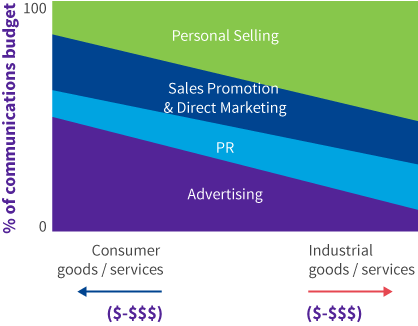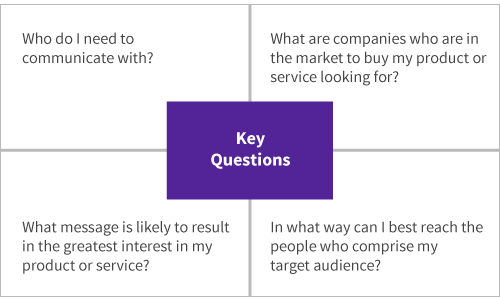The development and measurement of an effective communications campaign essentially involves 3-steps:
Step 1 – Preparatory work
Step 2 – Developing the elements of the communications campaign
Step 3 – Measuring the effectiveness of the communications campaign
Step 1 – Good preparation
Communicating with your target audiences is the lifeblood for building brand awareness and positioning your products and services in the most advantageous light.
The problem is, that in most markets (consumer, business or industrial) there is a plethora of noise from the combined communications of your competitors which can easily drown out your company communications’ endeavours.
Within the B2B market, there are a number of unique challenges you face when developing effective communications strategies and campaigns:
- Relatively small number of decision makers… and how to identify them?
- More complex decision making unit… and how to understand the decision making process including identifying who the decision makers and influencers are?
- Recognition that personal selling and targeted promotions are more powerful communications’ tools … and how to allocate the communication’s budget for maximum impact?

The Market Intelligence Co. (TMIC) has been conducting communications research for our clients for close to 30 years now and in that time we’ve learnt that good preparation comes from answering four key questions:

Our expertise in conducting communications research, whether it is one-on-one interviews, focus groups, or web based surveys, TMIC will help provide you with valuable answers to these questions.
Step 2 – Developing the elements of the communications campaign
What to say and how to say it in a compelling way. Most promotional campaigns are based on one creative idea or concept developed by the client in collaboration with its creative agency(s).
The most effective use of communications research dollars is to conduct research to ensure that the campaign communicates the correct message in the correct manner and that it contains a strong call to action, as opposed to spending the budget on post campaign research only to find out why the campaign did not achieve its objectives.
Pre-testing the creative allows you to fine tune your message ensuring that not only is it impactful but relevant to your market/target audience. At TMIC we’ve used longitudinal focus groups successfully in helping develop and refine the individual elements of the communications campaign.
Step 3 – Measuring the effectiveness of the communications campaign
Perhaps the most important question is to determine how effective the communications campaign has been? Certainly product sales is a good place to start, but there is no substitute to ascertaining the return on investment of individual elements of the communications campaign.
We are strong advocates for the conduct of campaign tracking research to measure campaign awareness, frequency of exposure, main message assimilation and emotional connection in the form of propensity to buy my product/s (or services) now or in the future.
